June 16, 2025
For the first time since 1973, Israeli interceptor missiles have been turned against Israel’s own air defense systems by enemy hackers operating in real-time.
Caption: Screenshot from Netanyahu’s video statement on June 13, 2025, showing the Israeli Prime Minister delivering remarks with Israeli flags in the background. Iranian media highlighted visual inconsistencies suggesting green screen technology was used to mask Netanyahu’s actual location during the conflict’s opening hours, as he had departed for Greece just 8 hours after launching Operation Rising Lion.
A Modern Pearl Harbor – How It Started, How It’s Going
At 3:00 AM on Friday, June 13, 2025, the shadow war between Israel and Iran erupted into direct confrontation when Israeli F-15I Ra’am, F-35I Adir, and F-16 fighters began launching precision strikes against Iranian nuclear facilities near Tehran. Within seventy-two hours, what began as “Operation Rising Lion”—Israel’s largest military operation since the Yom Kippur War—had evolved into the first sustained missile exchange between the two powers, fundamentally reshaping Middle Eastern security architecture.
The escalating conflict has now entered its fourth day, with both nations launching fresh waves of attacks despite mounting international pressure for de-escalation. Current casualties stand at 224 confirmed dead in Iran and 24 in Israel, marking the highest toll from direct Israel-Iran combat since the Islamic Revolution of 1979.
Economic shockwaves have been immediate and severe. Oil prices surged 11% following the initial strikes, while global markets experienced sharp volatility with Dow futures falling 600 points. The Shanghai Composite dropped 3.2% as investors fled to safe-haven assets, with gold reaching record highs above $2,400 per ounce.
The transformation from proxy warfare to direct state confrontation represents a seismic shift in regional dynamics, with implications extending far beyond the immediate combatants. This marks the first time Israel has confronted a state with formidable military capabilities since 1973, while Tehran’s retaliation represents the first instance where missiles fired from Iran have pierced Israeli defenses in significant numbers and killed Israelis in their homes.
“Latest news” comes in like multiple fire hoses, amidst confusion and multiple iterative fact checks needing to be done. For instance, Iran reports having shot down four F-35s so far while Israel reports downing two Iranian F-14s. However, minutes later it was revealed that the F-14s were decoys, having been standing still on Google Maps for years.
Iranian health ministry officials report 224 deaths and over 1,200 injured since hostilities began, with over 90% being civilians. Israeli emergency services confirm 24 deaths and 592 injuries from Iranian missile attacks.
The Critical Facts
Operation Rising Lion’s Initial Impact
Israel’s coordinated aerial assault targeted over 100 Iranian sites using more than 200 aircraft, with intelligence indicating months of pre-positioning by Mossad operatives. The strikes systematically targeted Iran’s nuclear infrastructure at Natanz, IRGC headquarters in Tehran, and missile bases across Kermanshah and Tabriz provinces. Israel achieved this by sabotaging Iran’s air defense from within Iran. Mossad for months or years, had secret drone factories near Tehran, and other means of infiltration which Iran is now routing out aggressively.
Caption: Iranian security forces display captured alleged Mossad operatives arrested during the conflict. Iranian police reported arresting multiple agents involved in pre-positioning equipment and coordinating intelligence for Israeli strikes.
Caption: Additional detained suspect allegedly connected to Mossad operations in Iran. The arrests highlight the extensive intelligence penetration that enabled Israel’s precision targeting of Iranian military leadership.
Leadership Decapitation Strategy
Israeli airstrikes have effectively decapitated Tehran’s military leadership and devastated its community of nuclear scientists. Among the confirmed casualties are Major General Hossein Salami, IRGC Commander-in-Chief, and Iran’s top military official Mohammad Hossein Bagheri, representing the most significant loss of Iranian military leadership since the Iran-Iraq War.
IRGC’s Electronic Warfare Breakthrough
Despite Israel’s technological superiority, Iranian missiles achieved unprecedented penetration rates through a revolutionary cyber warfare capability. Video evidence confirms the first documented case of real-time missile guidance system hijacking against modern air defenses. IRGC cyber warfare units successfully:
Hacked Israeli data transmission networks during the inertial guidance phase of interceptor missiles
Manipulated course-correction signals mid-flight
Successfully redirected Israeli interceptors to strike Israel’s own air defense batteries
This electronic warfare capability, while theoretically possible since Vietnam-era S-75 systems, marks the first confirmed real-time system hijacking against advanced Western air defense networks. The implications extend far beyond this conflict, potentially rendering NATO’s integrated air defense systems vulnerable to similar attacks.
Infrastructure Devastation
Iranian strikes have damaged Israel’s electrical grid in central regions and caused significant damage to oil refining facilities. The attacks represent Iran’s most successful penetration of Israeli territory since the establishment of the Iron Dome system. Multiple Iranian missiles destroyed buildings at the Weizmann Institute of Science in Rehovot, marking a significant breach of Israel’s multi-layered defense systems.
Even worse, the IRGC claims to be using the oldest missiles in their armories. As the war progresses, Iran will be able to evade Israeli air defense with more precision and firepower. Iran has been selective and has used hypersonic missiles in conjunction with drones, but sparingly so. Each day and night, the Iranian counter-offensive grows in sophistication, and accrued sustained damage while IDF has never topped their Day 1 results.
Strategic Target Assessment
Caption: IRIB Newscaster reacts as Israeli ballistic missile directly hits during live broadcast.
Israeli forces have systematically targeted Iran’s media infrastructure, including striking the headquarters of Iran’s national broadcast corporation IRIB during a live television broadcast, effectively blinding Tehran’s ability to coordinate public information during the crisis. The IDF claims to have destroyed one-third of Iran’s missile systems, though independent verification remains limited and some targets were confirmed decoys. Video analysis shows lack of secondary explosions, suggesting dummy targets.
High-value eliminations include the head of IRGC intelligence and several high-ranking officers, representing significant degradation of Iran’s command structure. Counter-intelligence operations revealed a Mossad drone assembly workshop in Isfahan, with 28 operatives detained so far.
Benjamin Netanyahu: Calculated Gambling and Flees to Greece
Perhaps most revealing was Netanyahu’s departure for Greece within hours of launching Operation Rising Lion, despite possessing one of the Middle East’s most sophisticated underground command facilities. Flight tracking data confirms “Wing of Zion” departed Ben Gurion Airport at 11:19 AM on June 13, just eight hours after the first strikes.
Caption: Flight tracking data from June 13, 2025, showing Netanyahu’s official aircraft departing Tel Aviv (TLV) at 11:19 AM and heading toward Athens. The aircraft is listed as “Israel - Government” flight B763, demonstrating the Prime Minister’s evacuation just hours after launching Israel’s largest military operation since 1973.
Caption: Flight path map showing Netanyahu’s journey from Tel Aviv to Athens on June 13, 2025. The Israeli Air Force flight IAF302 departed at 11:19 AM local time, arriving in Athens as Operation Rising Lion continued targeting Iranian nuclear facilities.
The Prime Minister’s decision to conduct the operation’s initial management from Greece/Cyprus rather than the $130 million bunker designed specifically for wartime command raises significant questions about Israeli confidence in their defensive preparations. Multiple sources suggest visual inconsistencies in Netanyahu’s subsequent recorded statements indicated green screen technology was employed to mask his actual location during the conflict’s critical opening hours.
Upon returning to Israel, Netanyahu positioned the operation as existential defense, declaring to troops “We are on the path to victory” while outlining dual objectives of eliminating Iran’s nuclear program and destroying its missile capabilities. His strategic calculation appears centered on exploiting Iran’s weakened proxy network, with Hamas degraded in Gaza, Hezbollah suffering major losses in Lebanon, and Syrian ties severed.
Netanyahu revealed the attack had been planned since September following Israel’s assassination of Hezbollah leader Hassan Nasrallah, but was postponed from April. The timing coincided deliberately with the expiration of Trump’s two-month deadline for Iranian nuclear negotiations.
Ayatollah Ali Khamenei: Iran Under Siege
Iran’s Supreme Leader faces the gravest threat to clerical rule since 1979. Khamenei warned that Israel faces a “bitter and painful” fate, declaring that “the powerful hand of the Armed Forces of the Islamic Republic will not let it go unpunished”.
The systematic elimination of his inner circle—including IRGC leadership and nuclear scientists—represents an unprecedented challenge to the regime’s survival. Israeli strikes have wiped out much of Khamenei’s inner circle, forcing emergency leadership restructuring amid ongoing combat operations.
The IRGC has appointed a new commander-in-chief to replace the killed Hossein Salami, though the identity remains classified, suggesting significant organizational disruption.
Donald Trump: Managing Widening Fallouts
President Trump finds himself managing not just bilateral Israel-Iran tensions, but a rapidly expanding coalition of military involvement. While maintaining that “we knew everything” about Israel’s operations, Trump faces the complex challenge of coordinating US defensive support—including 24 deployed KC-135 tankers, 4 KC-10 Extenders for in-flight refuels, and naval destroyer positioning—while avoiding direct offensive participation.
The deployment of four times more tanker aircraft than NATO’s largest exercise suggests unprecedented logistical support for sustained Israeli operations. US officials confirmed American Naval destroyer assistance from the Mediterranean in “shooting down missiles targeting Israel” while Trump emphasized the operation was Israel’s “unilateral action.”
Trump rejected an Israeli plan to assassinate Khamenei while warning Tehran to expect “the full strength and might of the US Armed Forces” if it retaliates against American interests. During meetings with Canadian Prime Minister Mark Carney, Trump confirmed seeing signals that Iran is willing to talk and could work toward de-escalation.
The President’s position remains precarious, balancing extensive military support for Israeli operations while managing Pakistani nuclear threats and Chinese military assistance to Iran—both developments that could fundamentally alter the conflict’s trajectory.
The Background On Rising Lion and True Promise III
Nuclear Program Timeline
In May 2025, the IAEA reported Iran had amassed 409 kg of 60% pure uranium—sufficient for multiple nuclear weapons if further enriched. A day before Israeli strikes, the IAEA found Iran non-compliant with nuclear obligations for the first time in twenty years.
The strikes occurred precisely as the sixth round of US-Iran nuclear negotiations was scheduled for Sunday in Muscat, Oman. Tehran subsequently canceled the talks, stating it could not negotiate while under attack.
Proxy Network Collapse
The conflict emerges from the systematic weakening of Iran’s regional influence. Following Hamas’s October 7 attacks, Israel aimed to reshape regional balance by targeting the “Axis of Resistance,” significantly weakened by mid-2025. The collapse of traditional proxy capabilities forced Iran into direct confrontation—a scenario Tehran had long sought to avoid.
The Role of Satellite Imagery and Casualty Verifications
Satellite Documentation
Satellite imagery from Planet Labs confirms extensive damage to Iranian missile bases near Tabriz and military installations around Tehran. The precision of strikes suggests real-time intelligence coordination between airborne platforms and ground assets.
Caption: Satellite view of Iran’s Fordow Fuel Enrichment Plant showing the underground centrifuge hall built deep into a mountainside near Qom. The facility’s terrain-protected design with tunnel entrances makes it virtually impervious to conventional Israeli munitions, representing a critical limitation in Operation Rising Lion’s nuclear objectives.
Israeli Army Spokesperson:
“We need President Trump to make a decision to assist us in destroying the Fordow facility. We have dealt a devastating blow to the Iranians, but delivering the knockout blow is in America's hands alone.”
Infrastructure Assessment
Caption: Weizmann Institute of Science the morning after Iranian ballistic missile strike.
The Weizmann Institute confirmed multiple campus buildings suffered extensive damage despite no on-campus casualties. Israeli strikes hit an Iranian refueling plane at Mashhad Airport—approximately 2,300 kilometers from Israeli territory—representing the most distant strike ever conducted.
International Monitoring
Following strikes, widespread internet outages were reported across Tehran, Isfahan, and Shiraz, attributed to both infrastructural damage and government-imposed restrictions. Elon Musk’s SpaceX reactivated Starlink satellite service for Iran to provide civilian internet access during the conflict.
Caption: Haifa’s gasoline refinery operations shutdown from Day 2 missile strikes. Haifa represents 60% of Israeli refinement, while Ashdod represents the other 40%.
Deeply Problematic IDF Claims and Positions
The Human Shield Paradox
Israel’s defensive positioning reveals a troubling contradiction in its urban warfare doctrine. The placement of Iron Dome and David’s Sling batteries throughout downtown Tel Aviv and the location of the “Fortress of Zion” military command center beneath IDF headquarters in the heart of Tel Aviv effectively transforms the city’s civilian population into de facto human shields for critical military infrastructure. Yet the IDF routinely claims this is the behavior of Hamas and others, but on much smaller scales such as one individual or a building holding several civilians.
Caption: NY Times article on the “Fortress of Zion” located directly under Tel Aviv.
The $130 million “Fortress of Zion” bunker, completed in 2018, houses offices for the prime minister, defense minister, and cabinet meeting facilities directly beneath one of Israel’s most densely populated urban centers. This strategic choice—while following standard military doctrine for protecting command structures—places over 400,000 civilians in the direct path of any enemy attempting to target Israel’s war command apparatus. It is curious why the IDF has chosen to make the whole of Tel Aviv a legitimate military target. In New York Times interviews, military planners have described this as “regrettable”.
Nuclear Facility Damage Assessment
While Israel claims significant success against Iranian nuclear infrastructure, the extent of damage remains disputed. Surface facilities at Natanz show clear damage, but underground enrichment capabilities—the most critical components—appear largely intact. The Fordow facility, built deep into a mountainside near Qom, shows no visible damage from satellite imagery.
Defensive Capabilities
The IDF claims to have destroyed more than 120 of Iran’s missile launchers, approximately one-third of its total. However, at least some were decoys, like the fake F-14s. Even in the videos the IDF shows as proof, there are no secondary explosions indicating loaded missiles. Iran continues launching successful strikes, suggesting either intelligence underestimation of Iranian capabilities or successful concealment of additional assets.
Civilian Impacts, US & International Involvement
Civilian Trauma in Bat Yam
Five Ukrainian nationals were among seven people killed in an Iranian missile strike on a Bat Yam apartment building, with over 100 wounded. Rescue operations continue as residents recount near-escapes from residential buildings that suffered direct hits.
Caption: Tweet from Israeli account @nosselhdegel1 on June 15, 2025, at 3:27 AM reading “They’re fucking turning us into Gaza!!!” The social media post reflects growing civilian anxiety as Iranian missiles successfully penetrate Israeli air defenses for the first time, striking residential areas and creating Gaza-like conditions within Israel proper.
The psychological impact extends beyond immediate casualties. Tehran residents are attempting to flee the capital, with government facilities including metro stations, schools, and mosques being prepared as shelters—though many facilities do not appear safe enough for effective shelter use.
Massive US Military Deployment
The United States has deployed unprecedented military assets to support Israeli operations, including 24 KC-135 Stratotankers and KC-10 Extenders—quadruple the number deployed during NATO’s largest exercise Trident Juncture 2018, which used only 6-8 tankers. These refueling aircraft, operating primarily from RAF Mildenhall and Ramstein rather than US bases, enable sustained Israeli air operations deep into Iranian territory.
Caption: Flight tracking map showing extensive US military tanker aircraft deployment across the continental United States on June 13-16, 2025. The unprecedented mobilization of KC-135 and KC-10 refueling aircraft represents four times the number deployed during NATO’s largest exercise, enabling sustained Israeli operations deep into Iranian territory.
US naval destroyers have been positioned throughout the Eastern Mediterranean and Red Sea to intercept Iranian missiles targeting Israel, effectively expanding American defensive involvement beyond diplomatic statements.
German Military Involvement Exposed
Despite official denials, a German Airbus A400M military fuel tanker was tracked accidentally turning on its transponder over Jordan while refueling Israeli fighter jets during Iranian attacks. The transponder activation lasted only seconds before being disabled, but confirmed German Air Force participation in defending Israel despite no public announcement of such involvement.
Caption: Flight tracking data showing German military aircraft PRIMR61 over Jordan during the conflict. The Airbus A400M tanker briefly activated its transponder while reportedly refueling Israeli fighter jets, exposing undisclosed German military support despite official government denials of direct involvement.
Potential Chinese Military Assistance to Iran
Flight tracking revealed a Chinese charter departing Zhengzhou before turning off its transponder and presumably entering Iranian airspace. Sources speculatate the commercial 747-ER cargo jet contained air defense systems, radars, and anti-aircraft weaponry to bolster Iranian defensive capabilities.
Caption: Cargolux flight CLX9735 departing Zhengzhou, China, on June 14, 2025, en route to Luxembourg but tracked entering Iranian airspace after disabling its transponder. Intelligence sources indicate the Boeing 747 cargo aircraft may have carried Chinese air defense systems and military equipment to support Iranian defensive capabilities.
Pakistani Nuclear Threats
In an explosive escalation, IRGC General Mohsen Rezaei claimed on Iranian television that “Pakistan has told us that if Israel uses nuclear missiles, we will also attack it with nuclear weapons.” Pakistani Defense Minister Khawaja Asif subsequently declared “Pakistan stands by Tehran in this difficult time,” introducing nuclear deterrence calculations involving Pakistan’s estimated 170-200 warhead arsenal.
Regional Spillover
Yemen’s Houthi rebels confirmed assisting Iran by launching ballistic missiles at Israel, expanding the conflict beyond bilateral exchange. Multiple Arab states have provided intelligence or defensive assistance to Israel, though most prefer maintaining public neutrality. Syria, Jordan, and Iraq have at times shot down drones and missiles from Iran en route to Israel. Turkey continues its Machiavellian stance, voicing support for Iran and Palestine, while continuing to trade heavily with Israel and conducting joint military exercises regularly.
From Sizzling Hot Proxy War to World War III?
Immediate Escalation Trajectory
Israeli Defense Minister Israel Katz warned that “residents of Tehran will pay the price” following Iranian strikes on civilian areas. Israeli officials indicate the operation is expected to take “weeks, not days” and is moving forward with implicit US approval. The scope suggests potential expansion beyond current nuclear and military targets to broader infrastructure.
Diplomatic Interventions
Iran’s Foreign Minister Abbas Araghchi has explicitly called for Trump intervention, suggesting the former president could “rein in” Netanyahu and potentially facilitate diplomatic resolution. Iranian President Masoud Pezeshkian warned of “tougher responses” if Washington fails to constrain Israeli operations.
Russia has offered mediation services through Kremlin spokesperson Dmitry Peskov, though Moscow’s credibility as neutral arbitrator remains questionable given ongoing Ukraine commitments.
Talks between the United States and Iran, hosted by Oman, were scrapped with Tehran refusing to negotiate while under attack. The EU’s top diplomat will convene an emergency meeting Tuesday to discuss potential diplomatic interventions.
US State Department raised its travel advisory for Israel to Level 4, authorizing voluntary departure of embassy family members and non-emergency personnel, suggesting expectations of prolonged conflict.
Nuclear Program Implications
Iranian lawmakers are considering withdrawal from the nuclear non-proliferation treaty—a move that would fundamentally alter regional nuclear dynamics and potentially accelerate weaponization efforts.
Economic Disruption
Major airlines including Lufthansa, Air France, KLM, and EasyJet suspended operations over Israeli, Iranian, Iraqi, and Jordanian airspace. Long lines of cars appeared outside Tehran gas stations as terrified residents tried to leave the capital. The Tehran Stock Exchange suspended trading after a 12% drop, while Israel’s TA-35 index fell 8% before markets closed early.
Timeline of Key Events
June 13, 3:00 AM: Operation Rising Lion begins with strikes on Natanz nuclear facility
June 13, 11:19 AM: Netanyahu’s aircraft departs for Greece; 24 US KC-135 tankers deploy
June 13, Evening: Iran launches first retaliatory missile barrage; German A400M accidentally reveals refueling operations
June 14: Sustained Iranian missile attacks hit Tel Aviv, Haifa, Weizmann Institute; Chinese military charter tracked entering Iranian airspace
June 15: Israeli strikes expand to Tehran’s Defense Ministry; Pakistani nuclear threats issued; car bombs detonate in Tehran
June 16: Israel bombs Iranian state television building during live broadcast; US naval destroyers intercept additional missile waves; IRGC electronic warfare capabilities exposed
About the Author
This report was compiled by Tatsu Ikeda using open-source intelligence, satellite imagery analysis, and diplomatic sources. Previous coverage includes analysis of Middle Eastern proxy conflicts and nuclear proliferation issues.
Editor’s Note
Information in this report was compiled from verified sources including government statements, emergency services, satellite imagery providers, and diplomatic officials. Given the ongoing nature of the conflict, casualty figures and damage assessments remain preliminary. All quoted material has been verified through primary sources or authoritative secondary reporting.
Corrections or clarifications: None at time of publication.
Footnotes
[1] Israel launches new attacks on Tehran as confrontation escalates and death toll rises
https://www.aljazeera.com/news/liveblog/2025/6/15/updates-death-toll-grows-as-iran-and-israel-continue-to-trade-attacks
[2] Israeli air war on Iran: Tehran calls on Trump to seek ceasefire
https://www.reuters.com/world/americas/israel-iran-battle-escalates-will-be-high-agenda-world-leaders-meet-2025-06-16/
[3] Israel-Iran conflict: June 15, 2025 Live Updates
https://www.foxnews.com/live-news/israel-iran-missile-strikes-tehran-tel-aviv
[4] A timeline of conflict between Israel and Iran
https://apnews.com/article/israel-iran-timeline-tensions-conflict-66764c2843d62757d83e4a486946bcb8
[5] Analysis: What options does Iran have in its conflict against Israel?
https://www.aljazeera.com/news/2025/6/15/analysis-what-options-does-iran-have-in-its-conflict-against-israel
[6] June 2025 Israeli strikes on Iran - Wikipedia
https://en.wikipedia.org/wiki/June_2025_Israeli_strikes_on_Iran
[7] 2024 Iran–Israel conflict - Wikipedia
https://en.wikipedia.org/wiki/2024_Iran–Israel_conflict
[8] June 15, 2025 - Israel-Iran conflict news
https://www.cnn.com/world/live-news/israel-iran-strikes-news-06-15-25
[9] Israel attacks Iran: What we know so far
https://www.aljazeera.com/news/2025/6/13/israel-attacksiran-what-we-know-so-far
[10] Iran fires missiles at Israel in escalating conflict over nuclear site attacks
https://www.nbcnews.com/world/iran/live-blog/israel-strikes-iran-middle-east-conflict-live-updates-rcna212727
[11] Israel-Iran war: 224 dead in Iran, 24 in Israel as death toll soars
https://www.wionews.com/videos/israel-iran-war-224-dead-in-iran-14-in-israel-as-death-toll-soars-1750050694851
[12] The Latest: Death toll grows as Israel and Iran trade attacks for third day
https://apnews.com/article/israel-palestinians-iran-war-latest-06-15-2025-291df01b03179cd414db21ca33791b39
[13] Israel and Iran trade more deadly strikes in third day of escalating conflict
https://www.npr.org/2025/06/15/nx-s1-5434172/israel-iran-strikes
[14] June 15: IDF conducts ‘extensive’ wave of strikes on weapons sites across Iran
https://www.timesofisrael.com/liveblog-june-15-2025/
[15] Live updates: Israel-Iran attacks, missile strikes on Tel Aviv, Haifa, rising death tolls
https://www.cnn.com/world/live-news/israel-iran-attack-strikes-news-06-16-25-intl-hnk
[16] Bombardment, strikes, deaths in third day of fierce Israel-Iran conflict
https://www.aljazeera.com/news/2025/6/15/bombardment-strikes-deaths-in-third-day-of-fierce-israel-iran-conflict
[17] Live updates: Israel claims aerial superiority over Iran’s capital, Tehran
https://www.nbcnews.com/world/middle-east/live-blog/israel-iran-live-updates-new-attacks-conflict-enters-fourth-day-rcna213182
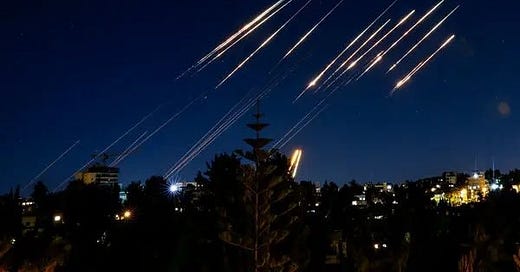



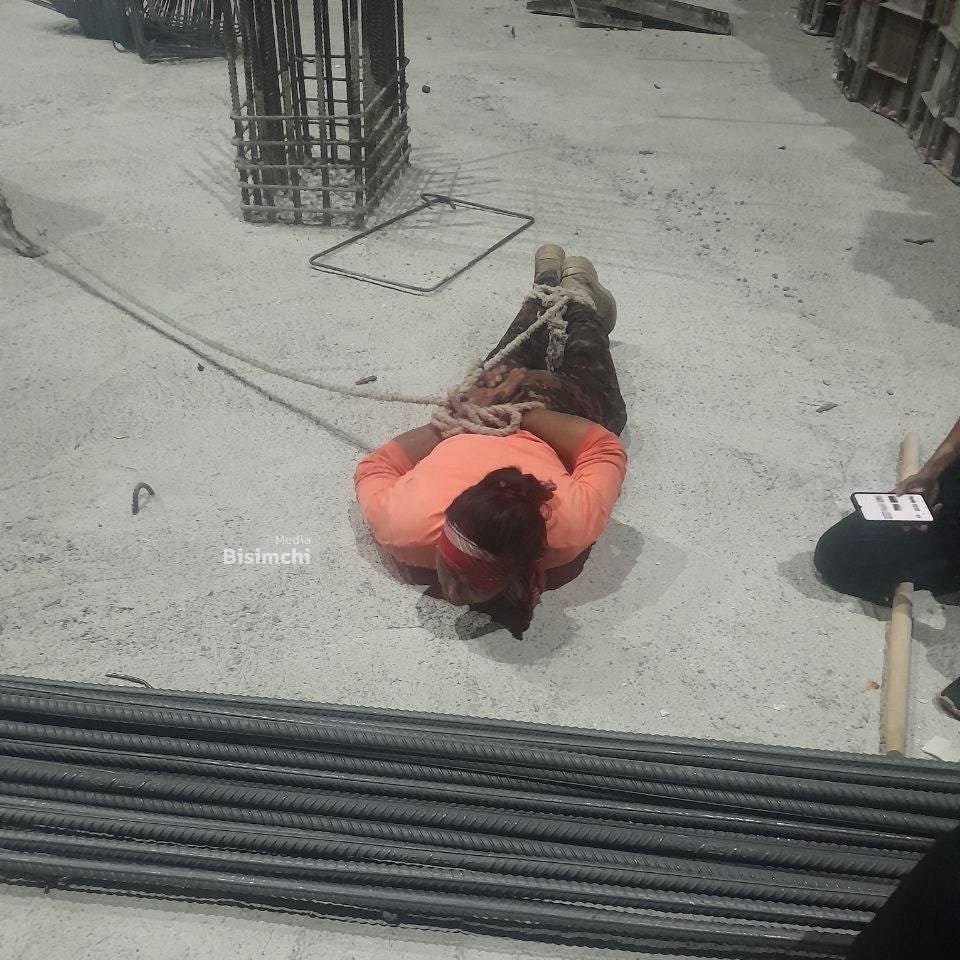
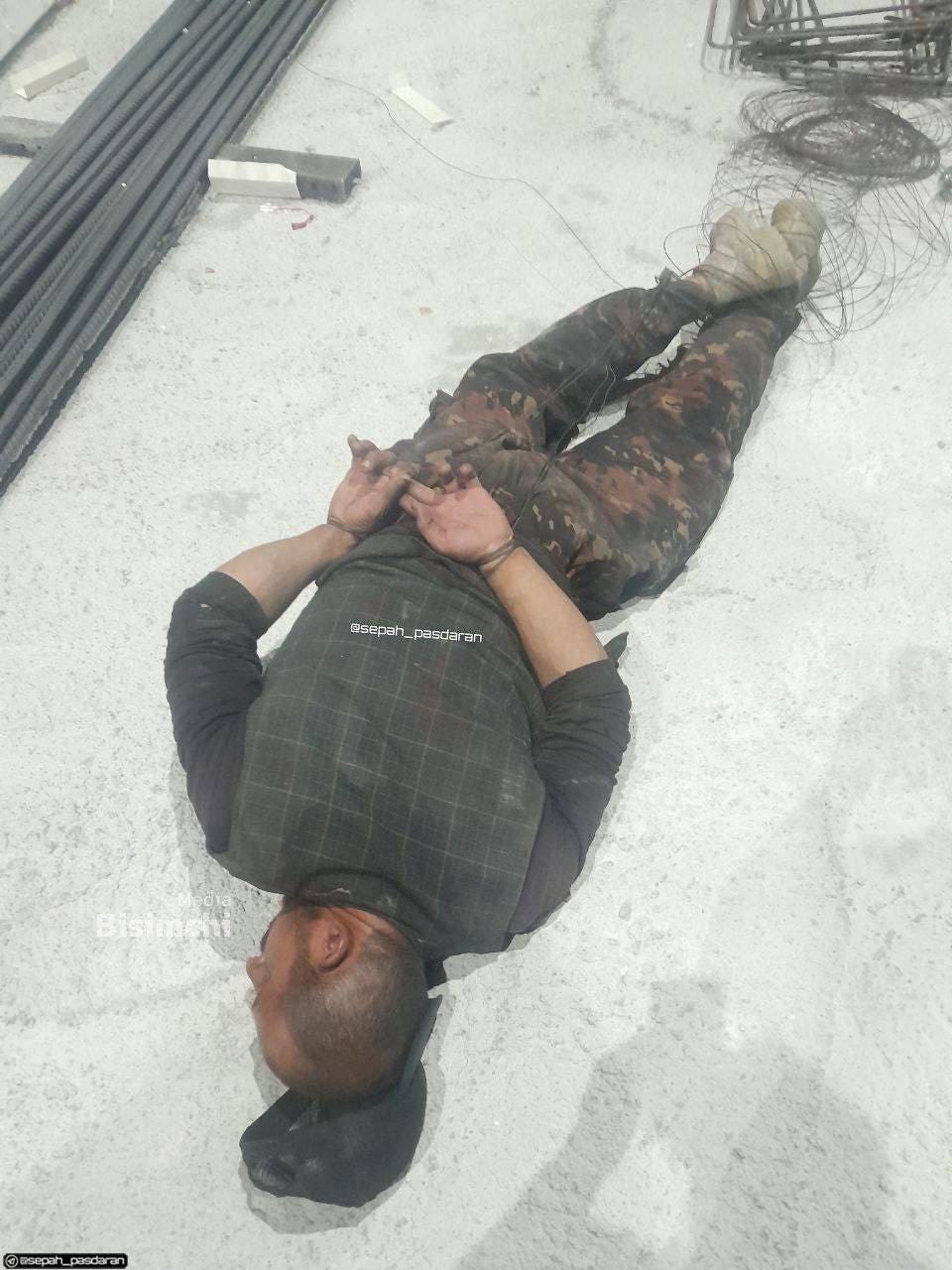
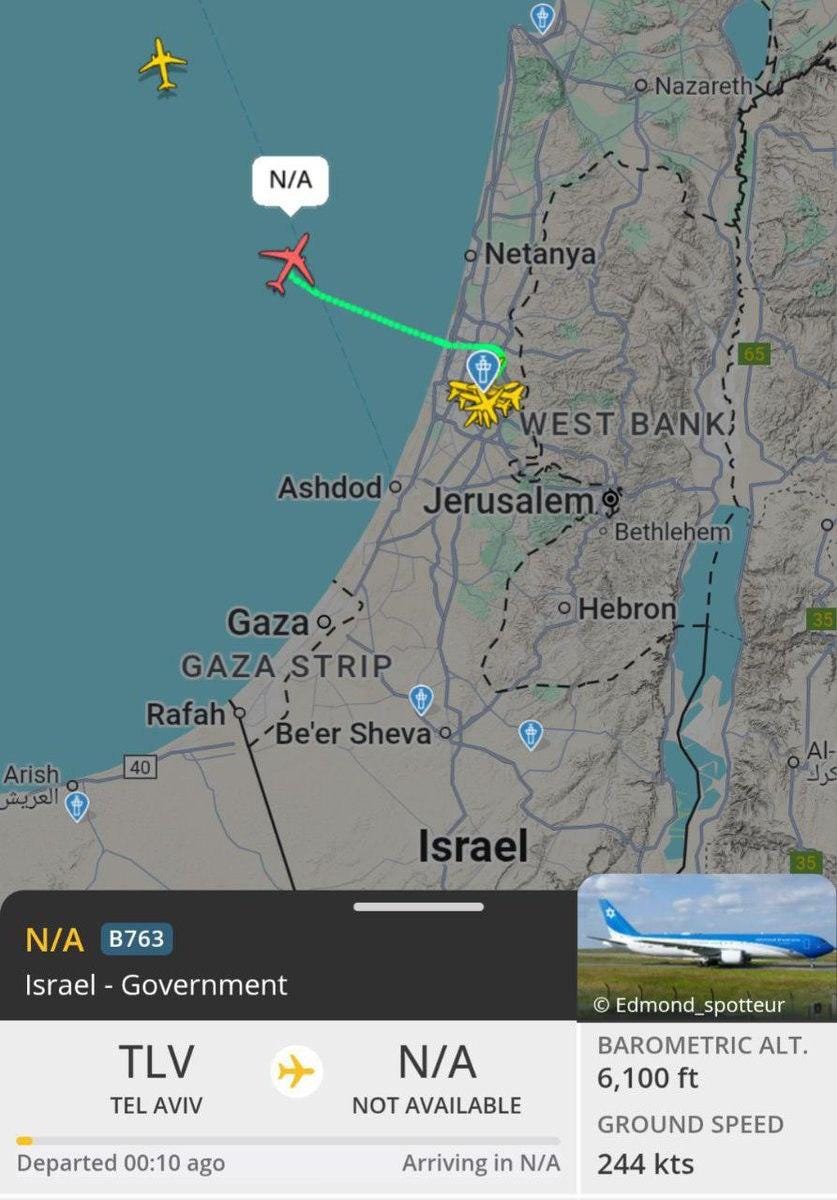

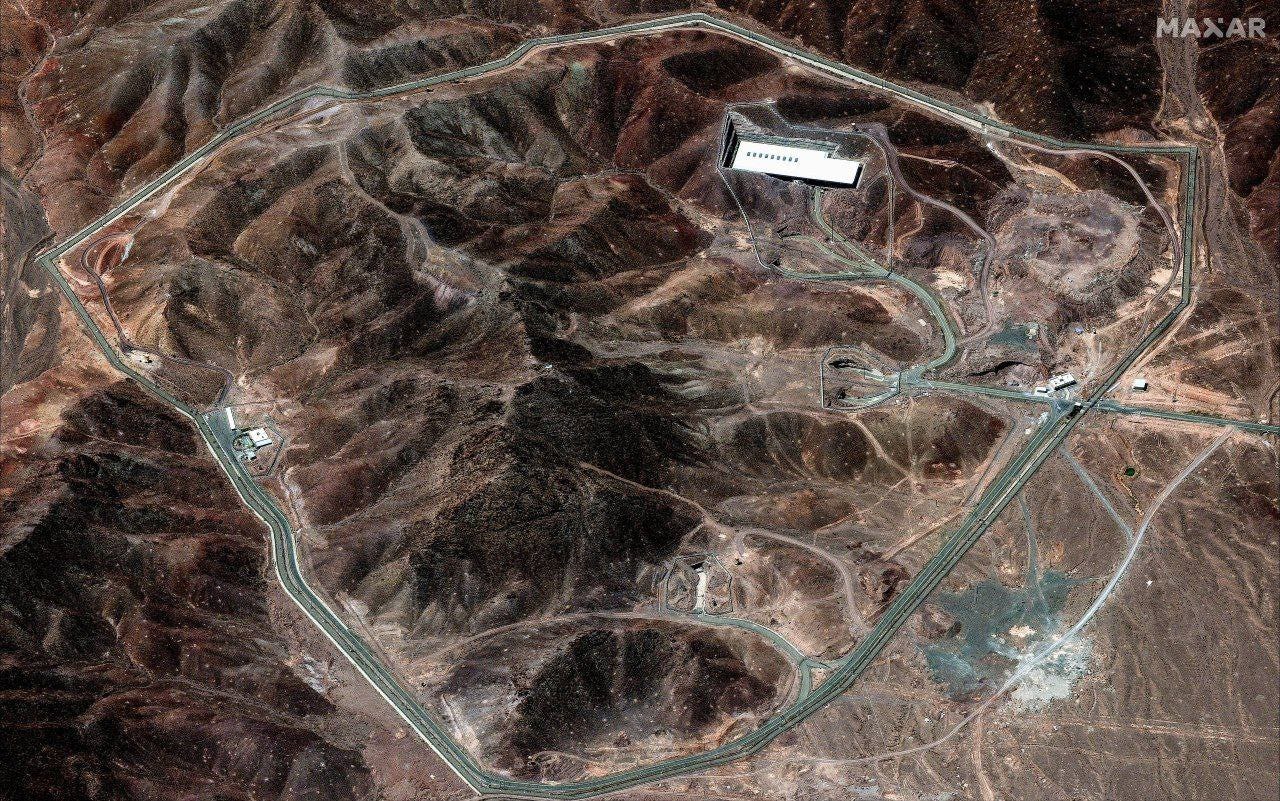
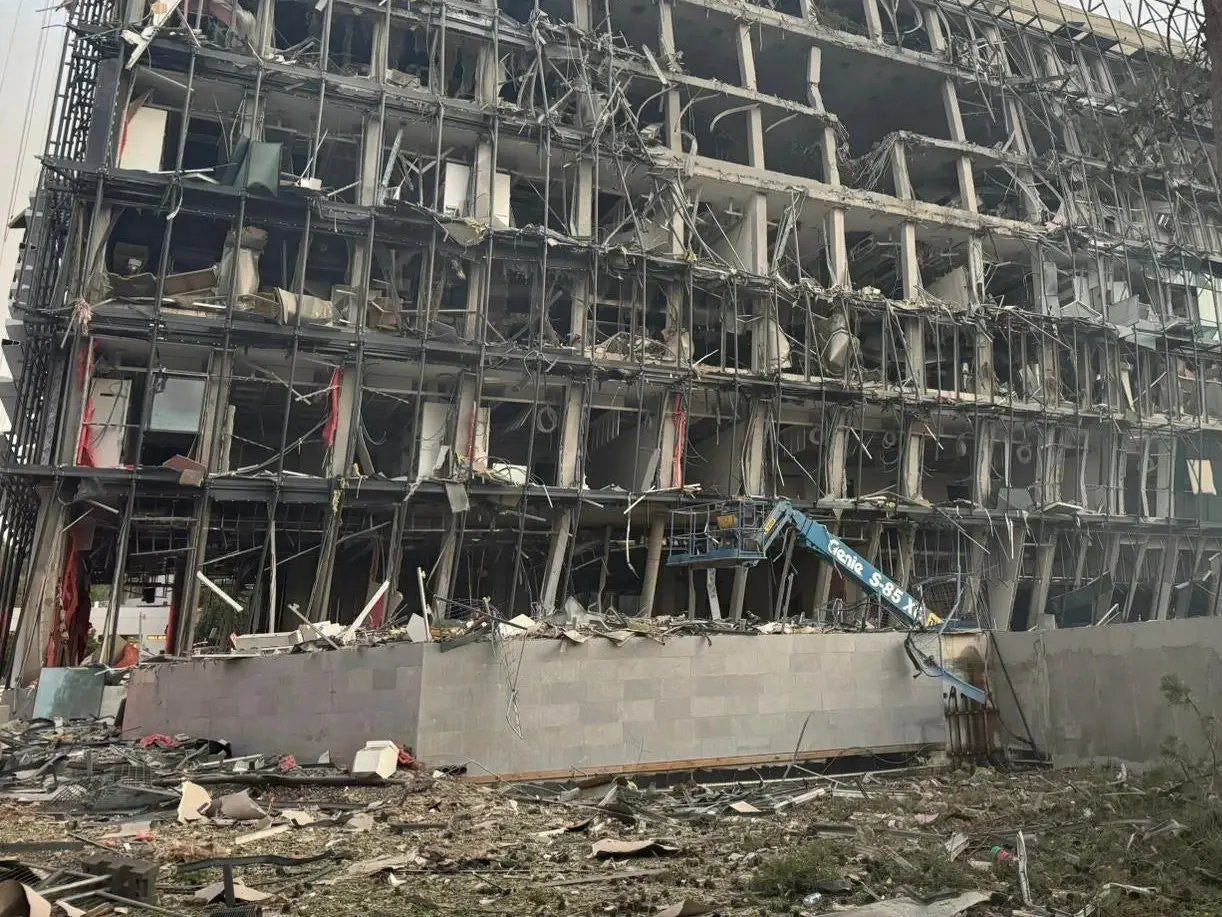



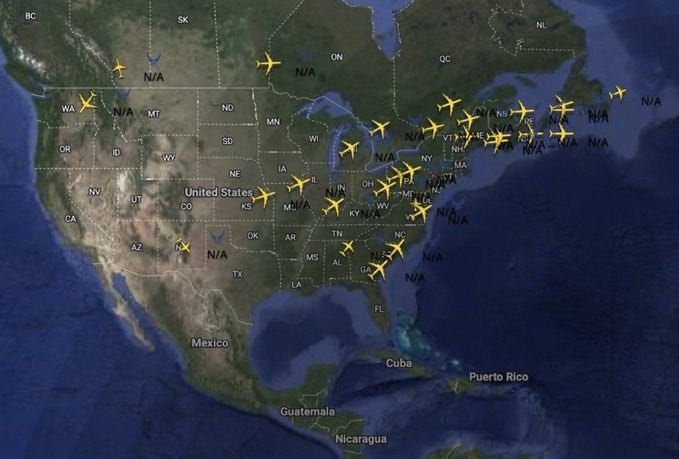
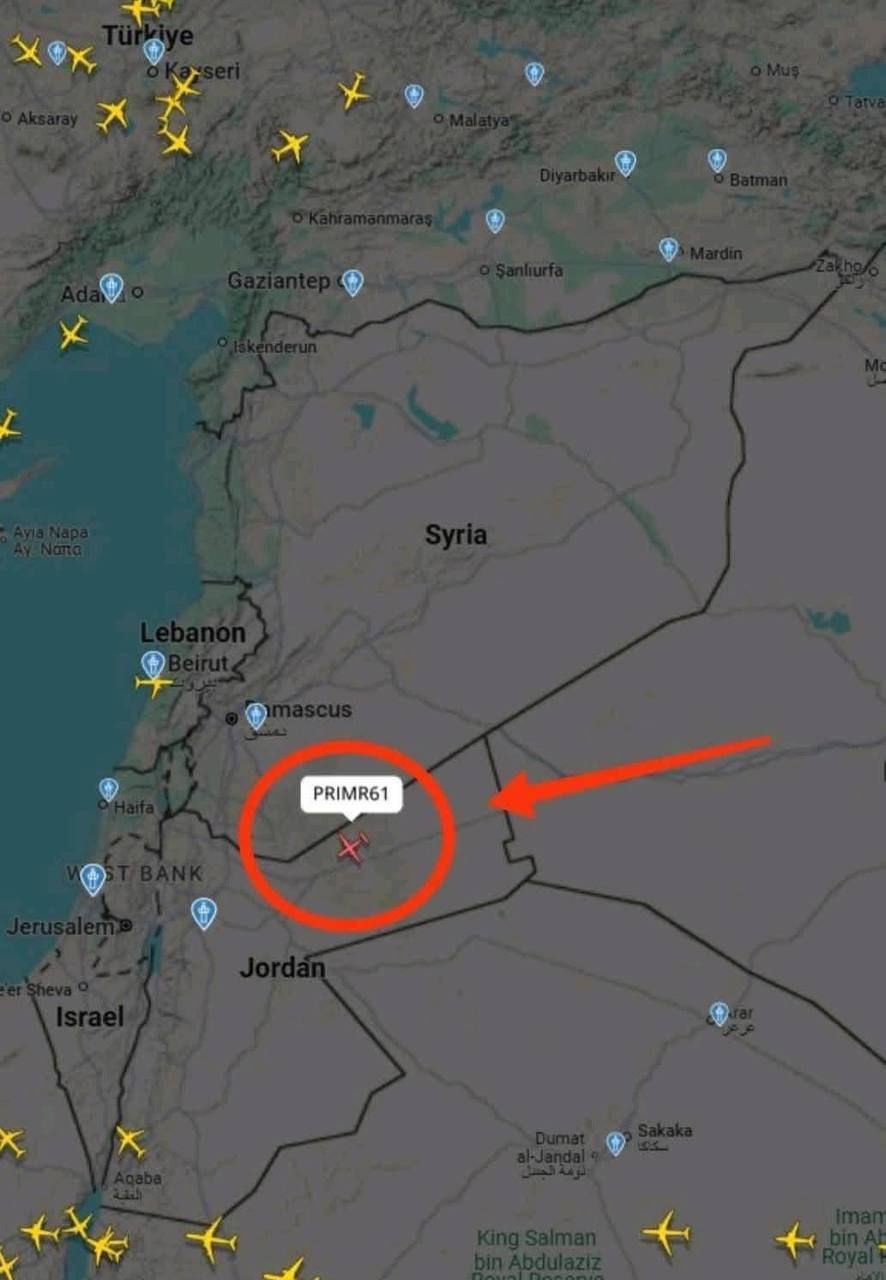
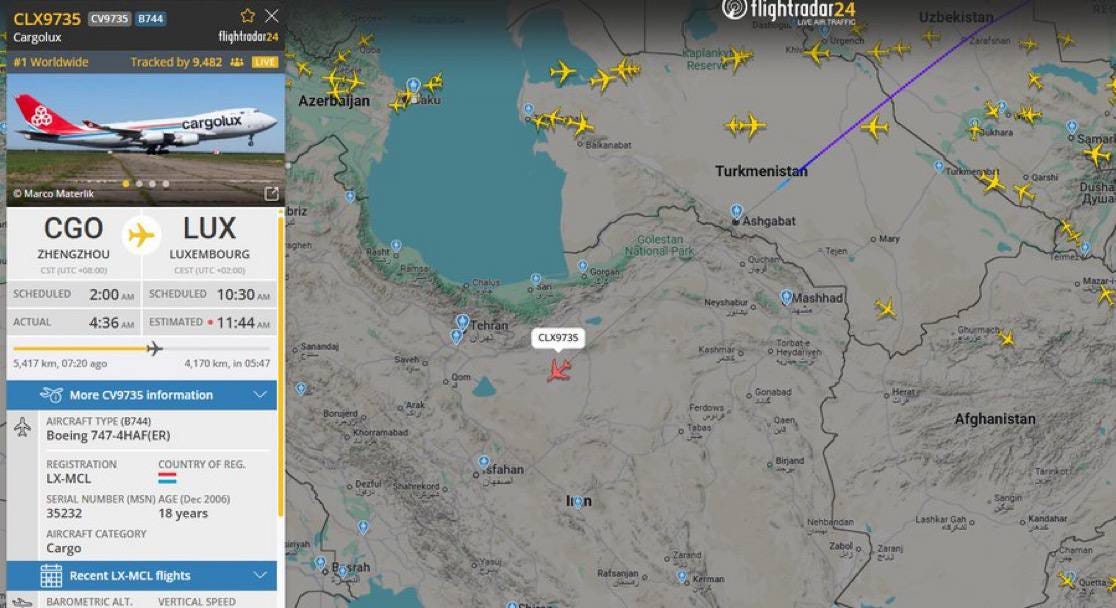

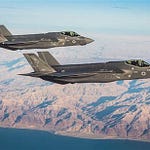






Share this post